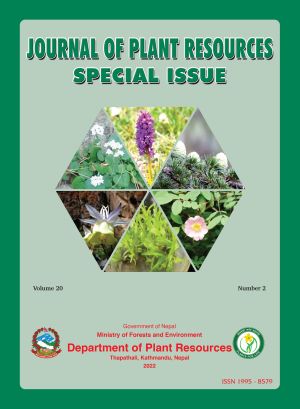Ethnomedicinal and Ceremonial Plants of Kukshow-Veiled Village of the Trans-Himalayan Cold Desert of Ladakh
DOI:
https://doi.org/10.3126/bdpr.v20i2.57037Keywords:
Documentation, Medicinal plants, Sustainable utilization, Traditional knowledgeAbstract
Cold desert landscape of Ladakh holds endemic and unique biodiversity of ethnobotanically important medicinal plants. These medicinal plants have been regarded as rich resources of traditional medicines since the advent of human civilization. As a result of rugged terrain, inaccessible landscape, harsh climate and lack of medical facilities in the region, the indigenous community is totally dependent on the local flora for healing. Study was based on seasonal reconnaissance surveys in years 2021 and 2022. 35 villagers were questioned based on semi-structured questionnaire to record ethnobotanical information. It enumerates 32 important and unique plant species. Asteraceae (6 species) is the most dominant family followed by Polygonaceae (3 species), Scrophulariaceae (3 species), Apiaceae, Fabaceae, Ranunculaceae and Rosaceae, each representing 2 plants; whereas the other families were represented by single taxa. The habit of the plants comprised a majority of 27 herbs, 3 shrubs and 2 trees. 15 plants among them were exclusively utilized for medicinal purpose only. Enumeration of the medicinal plants along with their usage will act as the baseline data for further chemical investigation of plant constituents in pharmacological industries. This current information on plants used by native communities could be promulgated to the new generation for awareness and sustainable utilization of plants. The festivity with which they celebrate the flowers in spring time is a valuable heritage and conservation ethos, which needs to be understood by the new generations.




